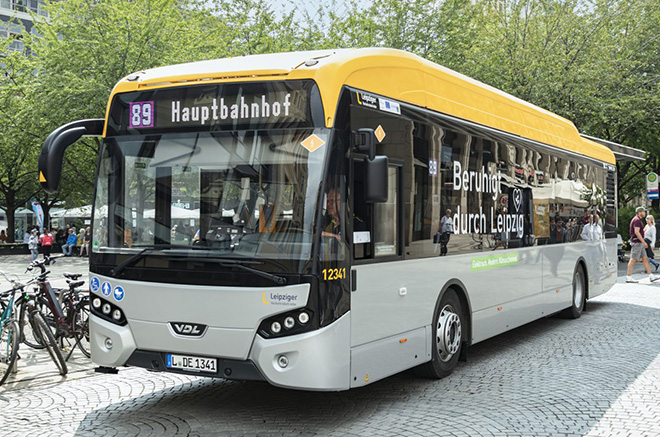The public transport operator for Leipzig, Germany plans to bring 21 VDL electric buses into service on three routes before the end of this year. To ensure they are charged efficiently and cost-effectively, Leipziger Verkehrsbetriebe (LVB) will use a charging management system from INIT subsidiary CarMedialab.
LVB’s depot management system, which has been updated to enable the transition to e-buses, is provided by INIT Mobility Software Solutions, another company of the INIT Group. Communication between the systems is based on standardized interfaces.
“Since interoperability is a top priority at LVB, the new VDV 463 interface for data exchange between charge management, depot management and ITCS systems is already being applied,” says INIT. “The interface was developed in cooperation with CarMedialab and published in June. VDV 261 is used for preconditioning the electric buses and the Open Charge Point Protocol (OCCP) for communication with the charging infrastructure supplied by Siemens.”
In 2022, LVB will procure 10 additional articulated buses for another fully electrified line. LVB is building a new e-bus depot with charging points at the Lindenau depot in western Leipzig. Additional charging options are being created at terminal stops, where the roof-mounted batteries can be recharged in approximately six to eight minutes during the turnaround time.
Initially, the e-buses will use a total of 40 charging points in the depot and on the routes. All charging points are monitored by the MOBILEcharge management system to provide information about availability, functionality, charging processes and dwell times.
As a result, the company explains, “the entire period can be used to charge the bus, which makes it possible to charge with less energy and therefore in a more battery-friendly way. Considering time-of-day-dependent energy tariffs in the future will ensure charging can be carried out in a cost-efficient way, with as much energy as is required for the next block. In this way, MOBILEcharge also helps to reduce the overall energy requirement. All necessary information concerning the remaining state of charge is provided to MOBILEcharge from a third-party ITCS via the VDV 463 interface.”
Source: Sustainable Bus









































































































